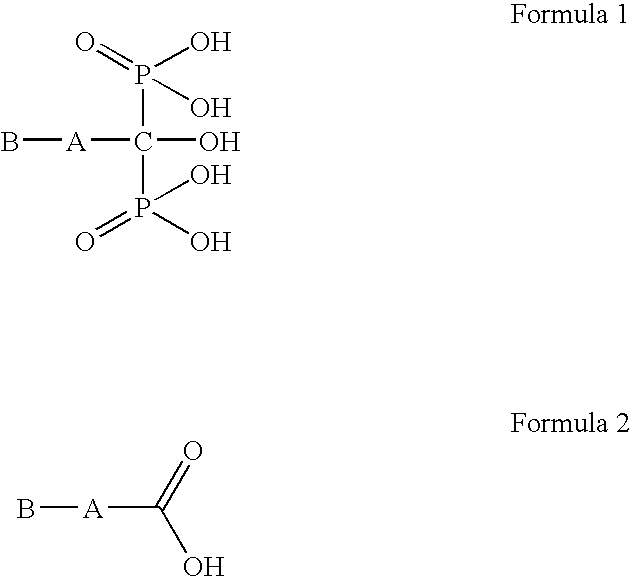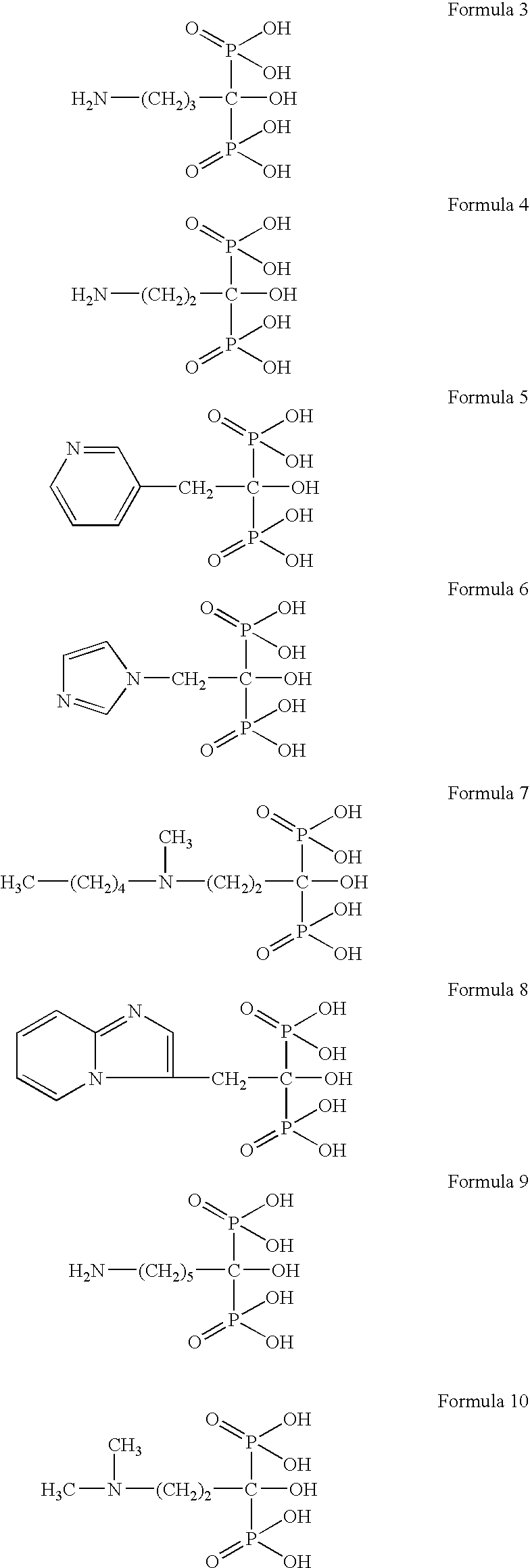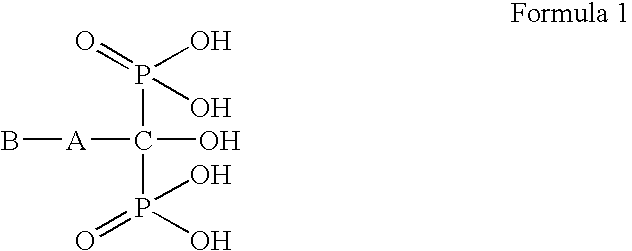Process for preparation of bisphosphonic acid compounds
a technology of bisphosphonic acid and compound, which is applied in the field of improved process for preparation of bisphosphonic acid compounds, can solve the problems of non-stirability, irritant skin, eyes, environmental hazards,
- Summary
- Abstract
- Description
- Claims
- Application Information
AI Technical Summary
Benefits of technology
Problems solved by technology
Method used
Image
Examples
example 1
Preparation of Alendronic Acid Monosodium Trihydrate
[0082]A suspension of 4-aminobutyric acid (25 g, 0.242 mol) and phosphorous acid (29.8 g, 0.364 mol) in sulfolane (90 ml) was heated to 75° C. for 30 min. The mixture was cooled to 35-40° C. and then gradually introduced phosphorous trichloride (72 ml, 0.824 mol) while maintaining the temperature between 35-45° C. The mixture was heated to 63-67° C. for 3 hours whereby a thick white mass resulted. It was then cooled to 0-5° C. and quenched by slow addition of water (250 ml) over a period of 1 hr. The resulting clear solution is heated at 100° C. for 3 hrs, cooled to ambient temperature and charcoalized. To the charcoalized solution is added 45% w / w sodium hydroxide solution at 0-5° C. until pH is 4.3. The mixture is then stirred for 3 hrs at 0-5° C. and the crystallized product is filtered, washed sequentially with chilled water (100 ml), rectified spirit (75 ml) and dried in air oven at 55-60° C. until water content is between. 16...
example 2
Preparation of Pamidronic Acid
[0083]A suspension of 3-aminopropionic acid (25 g, 0.280 mol) and phosphorous acid (34.5 g, 0.421 mol) in sulfolane (90 ml) is heated to 75° C. for 30 min. The mixture is cooled to 35-40° C. and then gradually introduced phosphorous trichloride (83 ml, 0.954 mol) while maintaining the temperature at 35-45° C. The mixture is heated to 63-67° C. for 3 hrs, whereby white solid results. It is then cooled to 0-5° C. and quenched by slow addition of water (250 ml) at 0-5° C. over a period of 1 hr. The resulting clear solution is charcoalized and is heated at 100° C. for 3 hrs, cooled to ambient temperature. Cooled the charcoalized solution and stirred for 4 hrs at 0-5° C. The crystallized product is filtered, washed sequentially with chilled water (100 ml), rectified spirit (75 ml) and dried in air oven at 55-60° C. until water content is less than 0.5% w / w. Yield 41.4 g, (62.7%), appearance: white crystalline solid, purity >99.0%.
example 3
Preparation of Pamidronic Acid Disodium Pentahydrate
[0084]To a stirred suspension of pamidronic acid (25 g) in water (200 ml) is added 20% w / w sodium hydroxide solution at 20-25° C. until pH is 8.0. The resulting mixture is stirred for 4 hours at 20-25° C. and then for 1 hour at 2-5° C. The crystallized product is filtered, washed with chilled water (50 nm) and dried in air oven at 55-60° C. until water content is between. 23-27% w / w. Yield 30 g, (76.4%), appearance: white crystalline solid, purity >99.0%.
PUM
| Property | Measurement | Unit |
|---|---|---|
| temperature | aaaaa | aaaaa |
| temperature | aaaaa | aaaaa |
| temperature | aaaaa | aaaaa |
Abstract
Description
Claims
Application Information
 Login to View More
Login to View More - R&D Engineer
- R&D Manager
- IP Professional
- Industry Leading Data Capabilities
- Powerful AI technology
- Patent DNA Extraction
Browse by: Latest US Patents, China's latest patents, Technical Efficacy Thesaurus, Application Domain, Technology Topic, Popular Technical Reports.
© 2024 PatSnap. All rights reserved.Legal|Privacy policy|Modern Slavery Act Transparency Statement|Sitemap|About US| Contact US: help@patsnap.com










